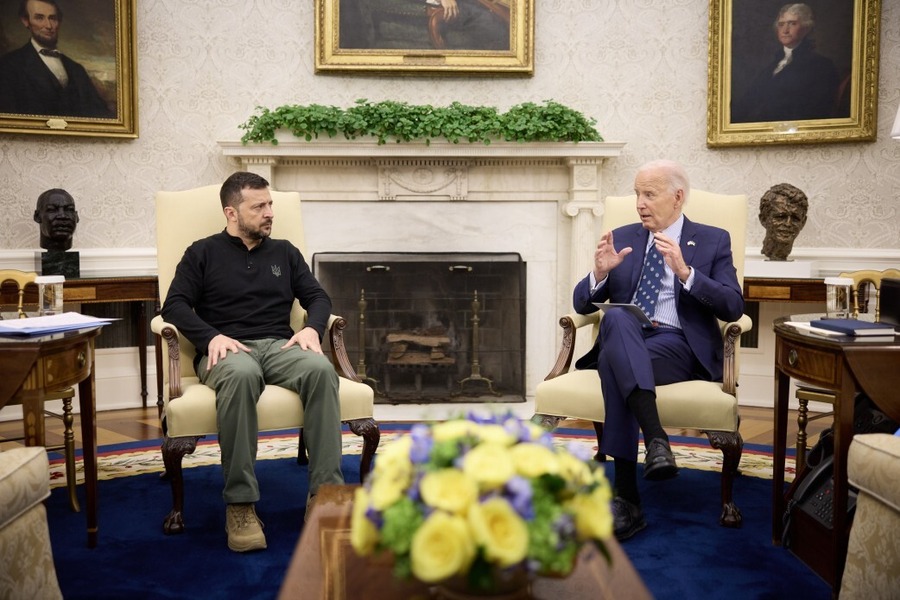Reactions to Foreign Relations Committee Hearing on the AUMF
There is much to say about today’s hearing on the AUMF, and I am sure my colleagues will weigh in with much more. But I have two quick reactions for now.
First, I suggest reading two recent Eli Lake articles together. The first is about internal Executive branch debates about how to characterize the continuing threat from al Qaeda affiliates, with White House officials wanting to downplay the threat. The
Published by The Lawfare Institute
in Cooperation With

There is much to say about today’s hearing on the AUMF, and I am sure my colleagues will weigh in with much more. But I have two quick reactions for now.
First, I suggest reading two recent Eli Lake articles together. The first is about internal Executive branch debates about how to characterize the continuing threat from al Qaeda affiliates, with White House officials wanting to downplay the threat. The second, a report on today’s hearing, is about how the administration’s plan to deal with the threat from al Qaeda affiliates relies on inherent Article II powers that Lake describes as Cheney-esque and that he reports "flabbergasted" many Senators. Here is how Lake’s two pieces fit together. The President in his NDU speech and other places wants (a) to characterize the Islamist terrorist threat as diminishing and the AUMF as increasingly unnecessary, but at the same time (b) to make clear that he retains authority to use force against all extant threats to American security via Article II. The President and his administration seem to think that repealing or rejecting reliance on the AUMF will be, or will be seen as, a narrowing of presidential war power and a constriction of the war against Islamist terrorists. But as today’s hearing shows, that is not how it will be seen. The reasons is simple: Reliance on Article II, while it potentially narrows the President’s detention powers, at the same time unmoors the President’s power to use force from the already-broad language of the AUMF and rests that power on Article II alone, which allows the use of force, in the absence of congressional authorization, against an even broader array of threats.
Second, I was heartened by Harold Koh’s testimony at the hearing. Koh repeated the administration’s line about how the AUMF is unnecessary because of Article II. But importantly, he also said he understands “why Congress might prefer not to leave a matter of such importance to inherent constitutional authority.” To address this concern, Koh said, “Congress could both clarify and narrow the scope of the AUMF going forward,” and in particular he proposed a statute that would authorize the President “to use force against those groups or individuals who pose a continuing and imminent threat to the U.S. by virtue of: (1) having already attacked the U.S.; (2) engaging in a concerted pattern of continuing armed activity directed against the U.S.; and (3) actively planning, threatening, or perpetrating armed attacks against the U.S.” I like this formulation because it is very close to what Ben, Matthew, Bobby and I proposed in an essay last year, where we argued for a new AUMF that would authorize force against “an organization with sufficient capability and planning that it presents an imminent threat to the United States,” or against “any group or person that has committed a belligerent act against the U.S. or imminently threatens to do so.” We also argued, like Koh, that one important reason for such a revised AUMF is that over time the use of force against different, morphing groups should not be left to the President’s inherent authority alone. Koh did not address our proposal to embed a revised AUMF within an administrative framework in order to increase the transparency and legitimacy of adding new individuals or groups for targeting. But since he aims to “give Congress greater say in authorizing force and bolster the constitutional legitimacy of counter-terrorism operations by giving the President’s current standards a shared legislative and executive imprimatur,” I don’t see why he would oppose making the process of adding individuals and groups to the President’s targeting list more transparent to Congress and the public.
Jack Goldsmith is the Learned Hand Professor at Harvard Law School, co-founder of Lawfare, and a Non-Resident Senior Fellow at the American Enterprise Institute. Before coming to Harvard, Professor Goldsmith served as Assistant Attorney General, Office of Legal Counsel from 2003-2004, and Special Counsel to the Department of Defense from 2002-2003.




.jpg?sfvrsn=8588c21_5)
